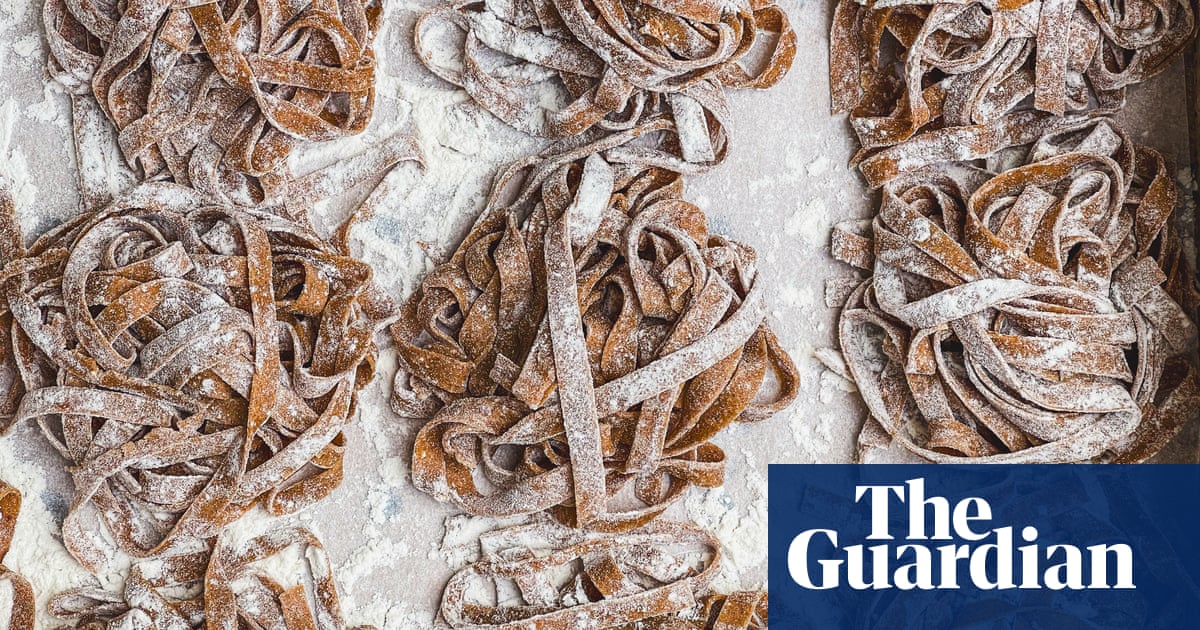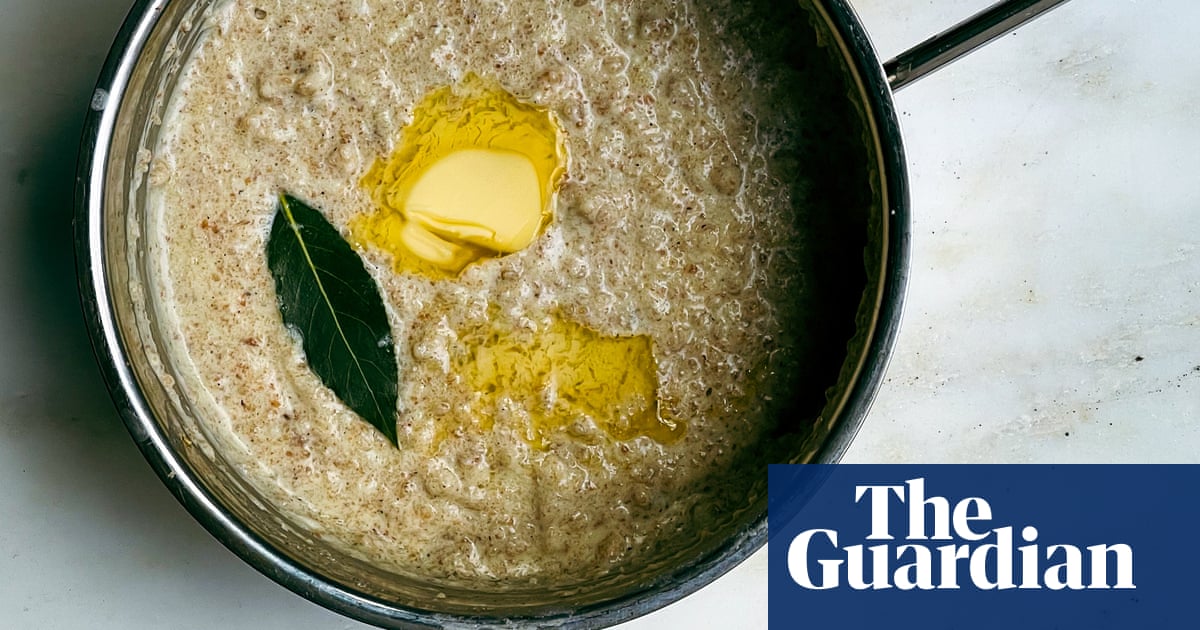
The @no_mise_en_plastic Instagram account is an incredible resource of practical tips to help cooks create waste-free kitchens, and often showcases chefs from around the world. The sourdough pasta made by one of them, Albert Franch Sunyer from the restaurant Nolla in Helsinki, really caught my eye.
In fact, Albert thinks leftover bread is one of the most versatile ingredients in the kitchen, and says his pasta recipe came from the need to use up stale leftovers after service: “We’ve been playing with leftover bread recipes since the beginning of Nolla, making everything – cheese crackers, ice-cream, crumbles, you name it. And we thought that, if bread is made from flour, we can probably make flour again.”
Sourdough pasta made with stale bread
“Normally, to use the least energy, we let the bread dry on shelves in the kitchen,” Albert tells me, because at Nolla they prefer not to use the oven when they don’t have to. “I call this invisible waste,” he says, describing unnecessary energy usage that we often don’t see. Nolla has a lot of vegan customers, so they make this pasta with water, so it’s a bit like traditional semolina pasta. I’ve used eggs, however, to create a more elastic pasta that holds up to my wholemeal bread, but have included water as an alternative. If you made this pasta with white bread, I’m sure it would create a finer powder that’s easier to work with. That said, my wholemeal bread pasta was nutty and very flavourful, and well worth the extra work involved in passing it through the pasta machine a few extra times.
Nolla serves a four-course menu in which the second dish is usually sourdough pasta. Albert says they’ve served it in hundreds of different variations, most recently with a smoked mushroom cream (which is itself made from mushrooms left over from making mushroom stock) layered with sourdough pasta sheets and served with fried lion’s mane mushroom, pickled shiitakes and shiitake oil. What an umami bomb!
If you don’t have a pasta machine, don’t fret – there are still lots of shapes you can make simply with your hands and a rolling pin, such as orecchiette (“little ears”) or pici (“hand-rolled spaghetti). Here’s the recipe for pici from my cookbook: “Roll out the dough into a rectangle about the thickness of a £1 coin (3mm). Brush with a little olive oil. One at a time, cut into 5mm strips, then roll under your hands into long worm shapes. Dust with flour or semolina and cook in plenty of salted boiling water for two to three minutes, or until it floats.”
Makes 2 servings
100g stale bread – make sure it’s completely dried out in a warm part of the kitchen, or using the residual heat of the oven after you’ve cooked another dish and turned it off
100g pasta flour
2 large eggs, or 100g water
Cut or break the bread into pieces, then blend to a fine flour (I used a jug blender). Add the pasta flour, pulse blend again to combine, then add the eggs (or water) and pulse until the mixture comes together into a ball – add more flour or water as necessary, to help it along. The dough should be moist but not sticky. Turn out on to a work surface, knead for five minutes, until smooth and elastic, then put in a tub and chill for at least 30 minutes. The dough may take longer than usual to become smooth and elastic, especially if you’ve used wholewheat bread.
Roll the dough into sheets, ideally using a pasta machine, then cut into your desired shape (or use to make lasagne).
To cook the pasta, boil a large pot of salted water to a rolling boil, drop in the pasta and cook for two minutes, or until the pasta floats. Drain, dress with your sauce of choice and serve.












